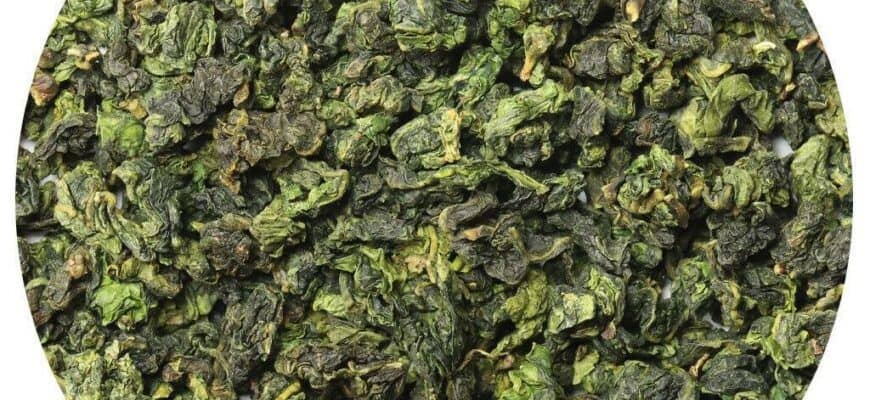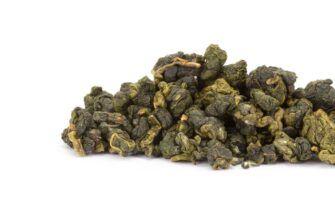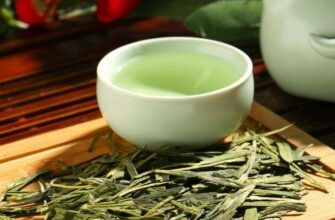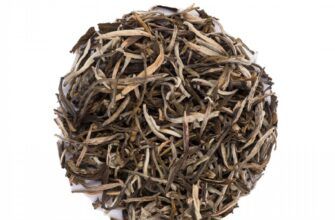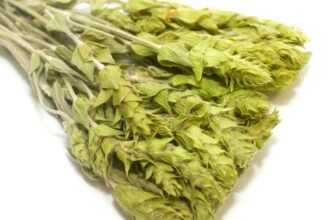Oolong is a traditional Chinese tea (Camellia sinensis) whose oxidation level is between black and green tea. Oolong tea oxidation percentage ranges from 10 to 70%.
In Chinese tea culture, semi-oxidized oolong teas belong to the Quyin Cha group (literally: "clear tea"). Oolong tastes more like green tea than black tea: it lacks the sweet, rich flavor of black tea, but it also lacks the herbaceous notes characteristic of green tea. Oolong has a strong, tart taste, with a slight bitterness, and leaves a sweet aftertaste. Several types of Oolong tea, including those produced in Wuyishan in northern Fujian and in central Taiwan, are among the most famous Chinese teas.
Oolong tea leaves are processed in two different ways. Some tea leaves are rolled into long tubes, and some are pressed into a spherical shape, reminiscent of gunpowder tea. The first processing method is much older.
The name Oolong came into English from the Chinese traditional name, which is pronounced Ou - Lon (eng. Oolong). The Chinese name means "Black Dragon Tea".
- About the name Oolong
- Oolong tea classification
- Varieties of Oolong tea
- Fujian wuyishan tea
- Da Hong Pao
- Shui Jin Gui
- Tie Luo Han
- Bai Ji Guan
- Roy Gui
- Shui Xian
- Fujian (non-rocky areas):
- Tie Guanyin
- Guangdong Province:
- Dan Cong
- Taiwan
- Dong Ding Oolong
- Dong Feng Mei Ren
- Alishan
- Lishan
- Pua Chong (Pouchong)
- Other Oolong teas:
About the name Oolong
There are three widely known theories about the origin of the name Oolong tea.
According to the Dan theory, this tea was a direct descendant of Da Ni tea (Phoenix Dragon tea). Over time, this tea was completely replaced by Oolong tea. Because its leaves are dark and slightly curly, the tea was named Black Dragon.
According to the "Wuyi" theory, Oolong first grew in Wuyishan. This is evidenced by some poems of the Qing Dynasty, such as Wuyi Tea Song and Tea Tales (Cha Shuo). These writings say that this tea was named after the Wuyishan area where it was first prepared.
According to the Angsi theory, Oolong was produced at the Anxi factory. It was discovered by a man named Su Long, from his name the name of tea came from.
There is another legend that tells of a man named Wu Liang (later Wu Long, or Ou Long) who discovered tea by accident. While picking tea at a plantation, spotting a deer and following it. Without catching the deer and returning to picking, he found that the collected tea leaves had already begun to oxidize.
Oolong tea classification
Oolong tea connoisseurs classify it according to aroma (often floral and fruity), taste, and aftertaste (often sweet, juicy). Oolong is either "toasted" or "weak". While most teas are ready to drink immediately after production, like Pu-erh tea, many Oolong teas only get better after a long aging after charcoal roasting or fire roasting. Before roasting, the leaves are rolled so as not to damage the cell walls of the leaf and stimulate the activity of enzymes. The roasting process removes off-flavours and any sour or astringent flavors. In addition, it is believed that this process makes the tea more delicate.
Varieties of Oolong tea
Fujian wuyishan tea
This most expensive and famous Oolong tea is produced in the Wuyi Mountains, and the production of this tea is considered organic. Shui Xian tea is grown in various regions of Fujian Province.
Here are some of the more famous teas grown in the Fujian Rockies:
Da Hong Pao
Literally "Red Robe Tea". This tea is one of two oolong teas that are in the top ten most famous Chinese teas.
Shui Jin Gui
Translated from Chinese, tea is "Turtle of Golden Waters".
Tie Luo Han
Translated from Chinese - "Black Arhat".
Bai Ji Guan
Translated from Chinese, "White Fool". Weak tea with yellowish leaves.
Roy Gui
The Chinese version of cinnamon, a dark tea with a spicy flavor.
Shui Xian
Translated from Chinese, tea is "Water Fairy". It is also grown elsewhere in Fujian.
Fujian (non-rocky areas):
Tie Guanyin
Translated from Chinese, "iron". This tea is grown in the Anxi region of South Fujian. This is a very famous, truly "Chinese" tea.
Guangdong Province:
Dan Cong
The name of several varieties of Guangdong tea. A kind of "twin", these teas are known for their ability to naturally mimic the flavors and aromas of various flowers and fruits, such as orange blossom, orchid, grapefruit, almond, ginger flower and others. As the name suggests, Dantsong ("lonely bush") grows in solitary bushes.
Taiwan
Tea cultivation in Taiwan began in the mid-19th century. Then, many varieties of teas, until then grown only in Fujian, also began to be grown in Taiwan. Since the 1970s, Taiwan's tea industry has developed at a very fast pace, as has the Taiwan economy as a whole. Since the demand for tea in Taiwan is very high and the culture of tea drinking is very developed, most Taiwanese tea is bought and consumed by Taiwanese people.
Because the weather in Taiwan is very changeable, the amount of tea harvested can vary greatly from season to season. Although the area is not very large, it is geographically diverse, with both high mountains and plains present. Different weather, temperature, altitude and soil are the reason why the varieties of tea grown in Taiwan are so diverse. In some mountainous areas, tea has a special sweetish flavor, so this tea belongs to the group of expensive teas.
Dong Ding Oolong
The name means "Frozen Peak" or "Ice Peak". Dong Ding is a mountain in Nantou, central Taiwan. It is a tea with tightly rolled leaves and a characteristic aroma.
Dong Feng Mei Ren
The name means "oriental beauty". Also known as Bai Hao. This tea has a heterogeneous structure (white or golden inclusions), is characterized by a natural fruity aroma, the decoction is bright red, and the taste is sweet.
Alishan
Grown in the Alishan District of Chiayi Province, this tea has large, twisted, purplish-green leaves. It is grown at an altitude of 1000 to 1400 winds. The period of harvesting the leaves of this tea is very short and must be done in the sun. It is believed that this is the secret of the sweet, not at all tart taste of tea. Alishan tea infusion has a unique fruity aroma.
Lishan
Grown in the north-central region of Taiwan, this tea resembles Alishan in appearance and is considered one of the finest teas from Taiwan. It is grown at an altitude of 1000 meters. Lishan, Dai Lin and Fitzsu regions are best known for this tea.
Pua Chong (Pouchong)
It is the most delicate and flowery Oolong with light green to brown leaves. Originally grown in Fujian Province, it is now widely cultivated and produced in Pingling City near Taipei, Taiwan.
Other Oolong teas:
- Darjeeling Oolong
- Vietnamese (Vietnamese Oolong)
- Thai (Thai Oolong)
- African (African Oolong), grown in Malawi and Kenya
